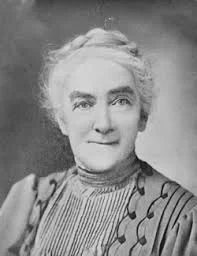This article, by Eva Phillips Boyd, originally appeared in the April-June 1959 issue of Old-Time New England magazine and chronicles her 1932 trip to London on the trail of Commodore Joshua Loring.
Read MoreThe Old Curtis Homestead was conveniently located near Stony Brook on Lamartine and Paul Gore Streets, a stone's throw from the Boylston Street railroad depot, where it stood from 1638 to 1887 as Jamaica Plain's oldest home for 250 years.
Read MoreIn 1907, one of the few remaining homesteads of history-making families of the trying days of the Pilgrims and Revolutionary period is the old Joseph Curtis place in Jamaica Plain, or what was known as the West Roxbury District.
Read MoreMiss Marguerite Souther was a grand Edwardian lady, but paradoxically she was a woman of pioneer spirit, liberated far beyond her generation.
n a 2012 interview, the late Dorothy Meyer recalled some of the highlights of a lifetime in Jamaica Plain: a one-room school, cows grazing in her neighborhood, mayors, governors, cabinet members, presidents, five-star generals, a duke and duchess, a future Pope, a December 7th Pearl Harbor hero, and a German Zeppelin just hours before crashing, were some of those memories of Arboretum Heights and the world at large from the same Lila Road house in Jamaica Plain.
Read MoreThe book Edwina chronicles the life of a precocious and delightful girl who lived in Jamaica Plain in the early 1900s. We hope you will enjoy these execerpts.
Read MoreElizabeth Bethune Campbell was a Jamaica Plain resident and author of the book Where Angels Fear to Tread which was very controversial in its time. Her book was self-published in 1940 from her home in the rectory of St. John’s Episcopal Church on Alveston Street.
Read MoreFor a married woman to achieve not only bliss but also intellectual parity with her husband a hundred years ago was a remarkable accomplishment. Ellen Swallow’s love affair with Robert H. Richards was hardly one of history’s great romances, but it demonstrated that hearts and minds could be equal, rational and compatible.
Read MoreIn the 1890s American women emerged as a major force for social reform. Millions joined civic organizations and, under the banner of “municipal housekeeping,” extended their roles from domestic duties to concern about their communities and environments. Their contributions were vital in civilizing and improving the horrific conditions created by the industrial revolution and the philosophies of social darwinism and unregulated capitalism. One of the first was Ellen Swallow Richards.
All of present-day Forest Hills was part of the bequest of the London merchant Thomas Bell in 1672, “for the maintenance of the schoolmaster for teaching and instructing poore mens children.” This bequest was to the Roxbury Latin School.
Read MoreA formal bench with central shaft, from which emerges a forest Indian, erected by friends of Francis Parkman in 1906, marks the approximate site of Mr. Parkman’s home, called “Sunnyside” and its accompanying gardens between Prince Street and the northwest corner of Jamaica Pond.
Read MoreDr. Kristen E. Gwinn speaks about the life of Jamaica Plain’s Emily Greene Balch who won the Nobel Peace Prize for her visionary work with the Women’s International League for Peace and Freedom.
Read More












